#roy andersson
Explore tagged Tumblr posts
Text


Songs from the Second Floor (2000), dir. Roy Andersson
31 notes
·
View notes
Text










About Endlessness (2019) | dir. Roy Andersson
32 notes
·
View notes
Text

A Pigeon Sat on a Branch Reflecting on Existence (2014) - dir. Roy Andersson
Roy Andersson is one of the most iconoclastic living European film directors and I can't recommend enough his movies saturated with ultra black humor, particularly if you have a deep distate for fascism, conservativism, nationalism, racism, and meanness in general. Even though his oeuvre has been described as 'Ingmar Bergman meets Monty Python', he has a very distinctive style and visual language that can even be considered surrealist. His films are more relevant than ever in today's political climate.
#he even ridiculed the Swedish king in this one#love this guy#roy andersson#cinema#surrealist cinema#movie scenes#movie gifs#film gifs#art house cinema
37 notes
·
View notes
Text





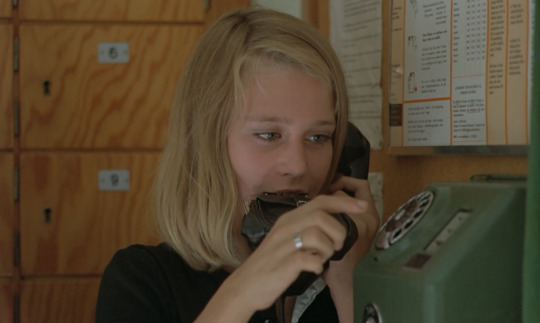
A Swedish Love Story, 1970
72 notes
·
View notes
Text
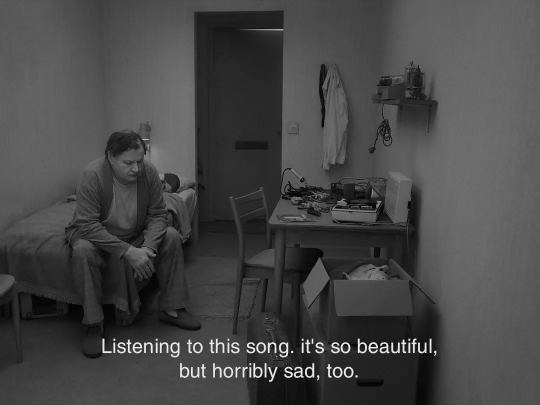
A Pigeon Sat on a Branch Reflecting on Existence (Roy Andersson, 2014)
76 notes
·
View notes
Text

Sånger från andra våningen (2000), Roy Andersson
9 notes
·
View notes
Text
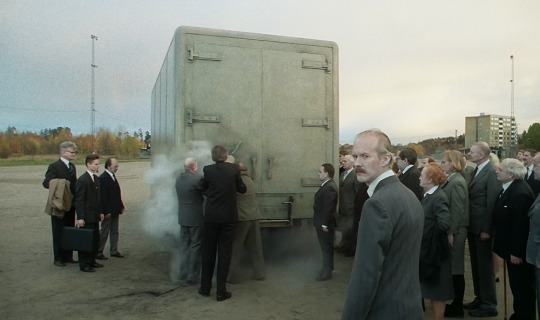
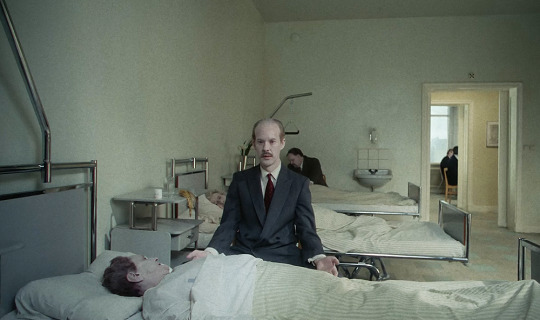



World of Glory (1991) directed by Roy Andersson
21 notes
·
View notes
Text

Happy 81st, Roy Andersson.
15 notes
·
View notes
Text















Songs from the Second Floor (2000) directed by Roy Andersson
#songs from the second floor#roy andersson#film#cinema#swedish cinema#surrealism#satire#social commentary#capitalism
6 notes
·
View notes
Text
Why did all these great artists skip the 1980s?
youtube
23 notes
·
View notes
Text
World of Glory (1991) Roy Andersson
8 notes
·
View notes
Text
A Pigeon Sat On A Branch Reflecting On Existence
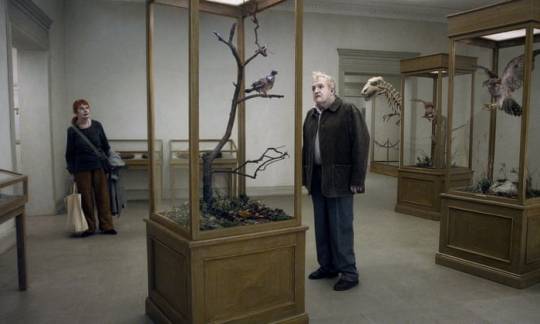
There are three things with which this film hits you over the head in its opening sequence: it is about death, the tone is lighthearted if miserable, and the use of sound, color, and still shots foreshadow a meticulous and deliberate symbolism. I have loved film, art, and media for some time now and recently have begun regulating my consumption at a new film a day. This film has inspired me to document my thoughts.
We are introduced not to our protagonists, but to the film as a character with simple and otherwise mundane vignettes of people living in a world whose color seems to vary widely between shades of beige. The color (or lack thereof) and apparently deliberate set dressing immediately prepares us for contrast: children blowing bubbles and playing in colorful clothes, a mother's red leggings with her stroller in the park, a red-haired woman stealing a puff off her lover's cigarette, a young couple making love on the beach, dressed in red, soldiers going off to war, men dying in literal representations of corperate machines. It seems color exists only in the lives of people with drama, with emotion. The gray-and-beige world of bar scenes, of our protagonists' flophouse, of shops and even streets are devoid of intensity and are bathed in an omnipresent fluorescent office lighting.
Our protagonists are door-to-door novelty salesmen, whos self-described purpose is to help people laugh. The obvious irony being that they lack energy and their wares are not funny. They move like mobsters, threatening their clients who are behind on payments for rubber masks. In essence, they are sad, poor, and unexceptional.
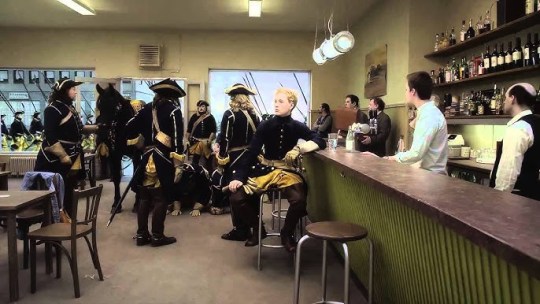
As we watch Johnathan and Sam fail their way through town, their pitiable sales pitch in yet another bar is interrupted by the army of King Charles XII of Sweden evidently marching to fight the Russians in the Great Northern War. If we payed attention in AP Euro, we'd know the young and inexperienced King Charles would force each member of the anti-Swedish coalition into submission save Russia, and upon invading Moscow would suffer wounds resulting in his army's defeat. As the young king is escorted into the bland, beige-and-pea-green bar, we see intense and bright color in the navies and golds of the Swedish military uniforms. This, to me, cements the presence of color as a physical representation to contrast the pervasive ennui and boredom of the protagonists with their lot in life. We know these soldiers will return from war wounded and defeated, if they return at all, and yet they follow a cause, they are inspired, and they have decided upon a meaning in life, disagreeable and tragic though it may be. They march to war singing a song introduced in a particularly characterful bar scene about "Limping Lotta" and her tavern in Gothenburg, with the lyrics changed to fit Charles XII's ten thousand men. We see here that persistence remains the same even when the nature of the struggle changes.
We continue to loosely follow Jonathan and Sam as Jonathan begins to feel a sense of existential aimlessness. He is listening to a song on repeat late at night when Sam comes to talk to him, concerned for his wellbeing. The source of Jonathan's misery is a fear of meeting his parents again in heaven; he is afraid of dying, and maybe even having died so plainly, in a place so dingy, without having been colorful, as those three mundane deaths we see in the beginning, set to insistent, even petulant music. He wears one of the play masks they had been trying to sell perhaps in an attempt at coloring himself so to speak.
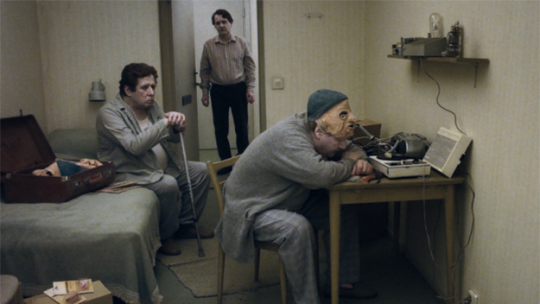
Sam, however sympathetic to his friend, is uninterested in this childishness. They have work to do and the people they report to are on their asses about their low sales records. They end up fighting and we see them part ways and make up. The friends are frustrated with their lot in life. They are uncertain of what to do. They are lost but they are friends. They have to keep living and they will do it side by side. Sam's apology to Jonathan is really touching. It is clear he isn't sure exactly what he's done wrong but he won't do it again. It is genuine and confused.
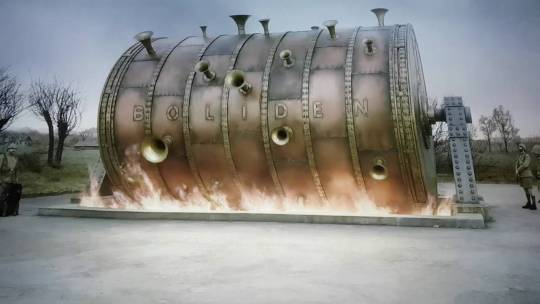
The next time we see Johnathan, he is recovering from a vision of black men and women and children being forced into a huge brass contraption which is then set alight. It begins spinning after a while and we see the name of Swedish multinational metals corporation Boliden. This long, agonizing shot ends when we flip to a window, out of which appear the cast of background characters, dressed up in black and ivory. This shot begins to bring together the themes of the film. The senses of meaninglessness and alienation begin to become attributable to bureaucracy and the complexity inherent in global forces - forces too large to observe with ripple effects too broad-ranging and complicated to wrap one's head around. Why do we march to war? For our king! Why do we drink? Because it makes me feel better. Why do we sell our novelties? Because we are told to. Why must we continue? Because we must. This scene has music that is somber and contemplative and new. It is not a callback or a reprise. Sam wants to get to work but Johnathan is full of turmoil. He asks thrice whether it is ok to use others for your own benefit to no answer.

The film ends at a bus stop as a man waiting for the bus is confused as to what day it is. His intuition failed him. It's an understated but fitting end. One can't expect satisfaction out of a film such as this.
Ultimately, the film is a depiction of the confusion innate in life as an individual in a society too vast to understand. Systems and machines overwhelm. One scene begins with the words homo-sapiens only to show us a monkey, wires sticking out of its brain, screaming, as a scientist ignores it entirely in the background, on a phone call. This is an obvious depiction of the film's perspective on the state of the individual human in a global world: buffeted by forces beyond understanding, suffering and unable to escape. A mind-numbing, boring, purposeless suffering envelopes contemporary society and salvation lies in ignorance and the simple joys of company. One may find it comforting that those with means still wear black even if they have slightly warmer lighting.
I am still contemplating the scene from which the film draws its title. As I understand it, children play a rather significant role in the symbol language of the film which I've yet to parse through entirely but I'm certain the three bots that read this will figure that out and tell me.
Anyhow,
I give Roy Andersson's "A Pigeon Sat on a Branch Reflecting on Existence" flaming Kafkaesque brazen bull turbine out of 5
#film#roy andersson#movie review#text heavy#long post#movies#cinema#cinephile#film review#long winded
6 notes
·
View notes
Text





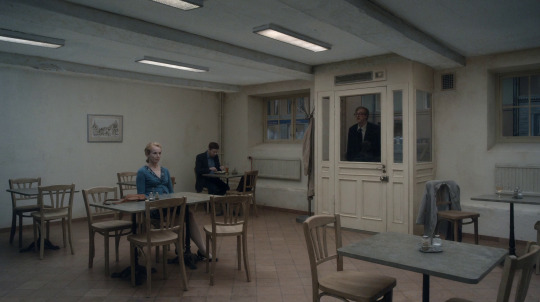


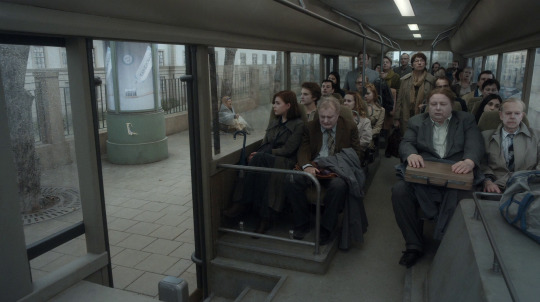

About Endlessness (2019) | dir. Roy Andersson
72 notes
·
View notes
Text
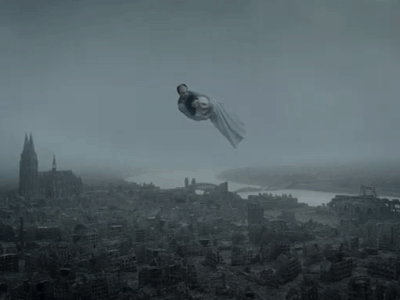
About Endlessness (2019) - dir. Roy Andersson
#roy andersson#surrealist cinema#surrealism#cinema#art house cinema#movie scenes#movie gifs#film gifs#film#swedish cinema
22 notes
·
View notes
Text





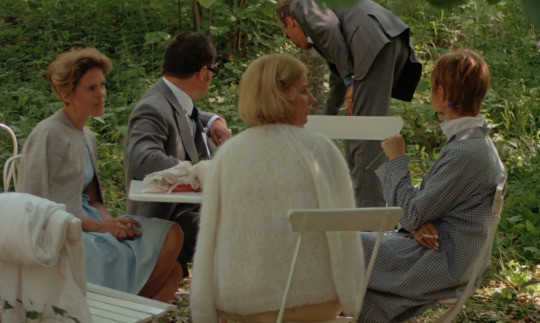
A Swedish Love Story, 1970
42 notes
·
View notes
Text








World of Glory (1991) // Roy Andersson
Unsettling, poignant and insanely original.
The best short film I've ever seen.
Recommended.
2 notes
·
View notes